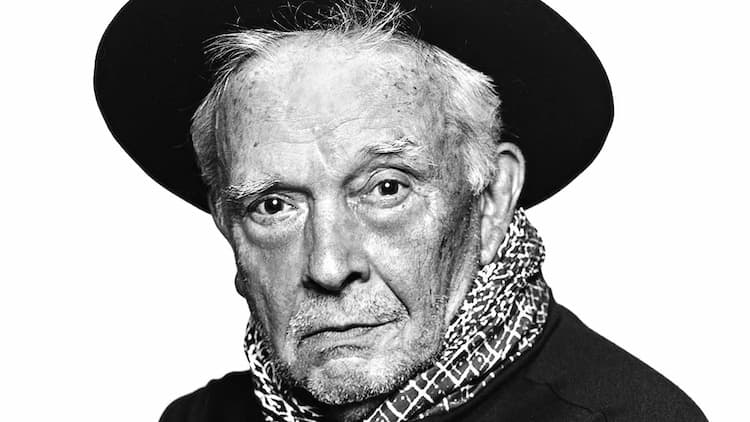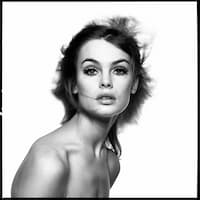David Bailey Biography
David Bailey CBE is an English photographer and filmmaker best known for his fashion and portrait photography, as well as his contribution to the image of the Swinging Sixties.
How old is David Bailey? – Age
He is 86 years old as of January 2 2024. He was born in 1938 in Leytonstone, London, United Kingdom. His real name is David Royston Bailey.
David Bailey Family – Education
Bailey was born in Whipps Cross University Hospital, Leytonstone, to Herbert Bailey, a tailor’s cutter, and his wife Gladys, a machinist. From the age of three, he lived in East Ham. He attended Clark’s College in Ilford, a private school that he claims taught him less than the more basic council school.
David Bailey Wife – Children
Bailey has been married four times: in 1960 to Rosemary Bramble; in 1965 to actress Catherine Deneuve, who he divorced in 1972; in 1975 to American fashion model and writer Marie Helvin; and in 1986 to model Catherine Dyer, born on 20 July 1961, to whom he is still married. He is a long-time vegetarian who abstains from alcohol. His company’s address is in London, and its directors are his wife and their photographic son, Fenton Fox Bailey.
David Bailey Net Worth
He has an estimated net worth of $6.32 million.
David Bailey Career
In 1959, Bailey turned into a visual colleague at the John French studio, and in May 1960, he was a photographic artist for John Cole’s Studio Five, preceding being contracted as a design picture taker for English Vogue magazine soon thereafter. He likewise embraced a lot of independent work.

Alongside Terence Donovan and Brian Duffy, Bailey caught and made the ‘Swinging London’ of the 1960s: a culture of style and big name stylish. The three picture takers associated with entertainers, artists and sovereignty, and ended up raised to VIP status. Together, they were the main genuine VIP photographic artists, named by Norman Parkinson “the Dark Trinity”.
The movie Blowup (1966), coordinated by Michelangelo Antonioni, portrays the existence of a London style photographic artist who is played by David Hemmings, whose character was propelled by Bailey. The “Swinging London” scene was suitably reflected in his Container of Centerfolds (1964): a crate of banner prints of 1960s big names including Terence Stamp, The Beatles, Mick Jagger, Jean Shrimpton, P. J. Proby, Cecil Beaton, Rudolf Nureyev and East End criminals, the Kray twins. The Container was a surprising and remarkable business discharge. It mirrored the changing status of the picture taker that one could sell an assortment of prints along these lines. Solid issue with the presence of the Krays by individual photographic artist, Master Snowdon, was the significant explanation no American version of the “Crate” was delivered, and that a second English release was not given. The record deal for a duplicate of ‘Box of Dream boats’ is accounted for as “north of £20,000”.
At Vogue Bailey was shooting covers in practically no time, and, at the level of his efficiency, he shot 800 pages of Vogue publication in one year. Penelope Tree, a previous sweetheart, depicted him as “the lord lion on the Savannah: unimaginably appealing, with a risky energy. He was the power, the most brilliant, most impressive, most skilled, most vigorous power at the magazine”.
American Vogue’s inventive chief Effortlessness Coddington, then, at that point, a model herself, said “It was the Sixties, it was a raving time, and Bailey was incredibly gorgeous. He was all that you believed him should be – like the Beatles however available – and when he went available everybody went in. We were all committing suicide to be his model, despite the fact that he connected with Jean Shrimpton before long”. Starting around 1966, Bailey has likewise coordinated a few TV plugs and narratives. From 1968 to 1971 he coordinated and created television narratives named Beaton, Warhol and Visconti. As well as design photography, Bailey captured collection sleeve workmanship for artists including The Drifters and Marianne Faithfull.
Bailey was recruited in 1970 by Island Records’ Chris Blackwell to shoot exposure photographs of Feline Stevens for his impending collection Tea for the Tillerman. Stevens, who is presently known as Yusuf Islam keeps up with that he detested having his photograph on the front of his collections, as had recently been the situation, in spite of the fact that he permitted Bailey’s photos to be put on the internal sleeve of the collection.
In 1972, rock vocalist Alice Cooper was captured by Bailey for Vogue magazine, practically bare separated from a snake. Cooper involved Bailey the next year to go for the gathering’s diagram beating Billion Dollar Children collection. The shoot incorporated a child wearing stunning eye cosmetics and, evidently, one billion bucks in real money requiring the shoot to be under furnished watch. In 1976, Bailey distributed Ritz Paper along with David Litchfield. In 1985, Bailey was shooting stars at the Live Guide show at Wembley Arena. As he reviewed later: “The environment on the day was perfect. At a certain point I got a tap on my shoulder and turned round. Unexpectedly there was a major tongue down my throat! It was Freddie Mercury.”
In 1992, Bailey coordinated the BBC show Who Managed? featuring Juliet Stevenson, story by Ring Lardner. In 1995 he coordinated and composed the South Bank Film The Woman is a Drifter highlighting his better half Catherine Bailey. In 1998 he coordinated a narrative with Ginger TV Creation, Models Close Up, charged by Station 4 TV. In 2012, the BBC made a film of the tale of his 1962 New York photoshoot with Jean Shrimpton, entitled We’ll Take Manhattan, featuring Aneurin Barnard as Bailey.
In October 2013, Bailey participated in Craftsmanship Battles at the Saatchi Display organized by Ben Moore. The craftsman was given with a stormtrooper cap, which he changed into a show-stopper. Continues went to the Missing Tom Asset set up by Ben Moore to find his sibling Tom who has been absent for more than decade. The work was likewise displayed on the Officials Park stage as a feature of Craftsmanship Underneath Officials Park.
In October 2020 Bailey’s diary Again search in co-activity with writer James Fox was distributed by Macmillan Books, a survey on his life and work.
David Bailey Fashion
Bailey began working for the fashion business Jaeger in the late 1950s, when Jean Muir was hired as the designer. Bailey was officially commissioned by Vogue in 1962 after working alongside other fashion photographers, including the late Norman Parkinson.
His first picture in New York City featured teenage model Jean Shrimpton wearing a variety of Jaeger and Susan Small outfits, including a camel suit with a green shirt and a suede coat paired with kitten heels. The shoot was called ‘Young Idea Goes West’.
After 53 years, Bailey returned to Jaeger to photograph their AW15 campaign. As the clothing subject, James Penfold modeled fitted tweed blazers and a camel coat. Model, philanthropist, and film director Elisa Sednaoui joined the shoot, as did Martin Gardner, GQ magazine’s most stylish male in 2003.
